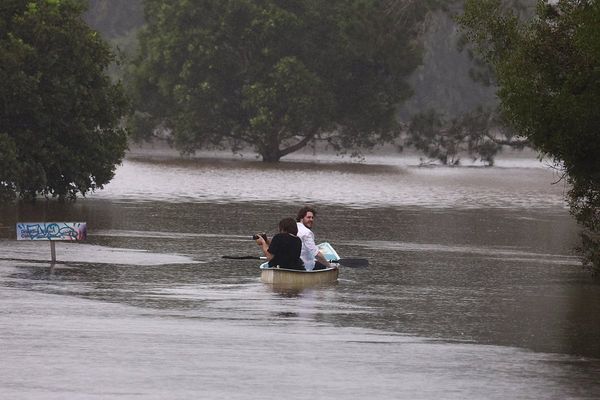
One of the worst winter storms of the 20th century buried the East Coast of the United States under feet of snow 30 years ago, with devastating impacts from the Gulf Coast to Canada.
The Blizzard of ’93, sometimes referred to as the “Storm of the Century” or the “Superstorm of 1993,” occurred between Friday, March 12, and Sunday, March 14, and blasted the eastern United States with widespread heavy snow, hurricane-force winds and severe thunderstorms.
The blizzard was classified as a Category 5 storm and was one of the most devastating storms of the 20th century, according to the National Centers for Environmental Information (NCEI).
“The storm produced an extremely rare, massive swath of 1- to 3-foot snowfall. When combined with wind gusts of tropical storm to hurricane force, it brought drifts as high as single-story homes to the Appalachians,” AccuWeather Senior Meteorologist Alex Sosnowski said.
“The Blizzard of ’93 is a good example of a ‘snowicane’,” Sosnowski said. “It was the granddaddy of ’em all.”
Emergencies were declared in a dozen states with significant snowfall shutting down roads and airports across the East Coast for days.
It is estimated that the historic blizzard caused $6 to $11 billion in damages and killed more than 300 people.
Schools were shut down for days, including in the major cities like Washington, D.C., Philadelphia and New York City. More than a foot of snow fell in these cities before snow changed to sleet.

In the days leading up to the historic storm, meteorologists began to see an ever-growing likelihood that the worst case scenario was about to unfold.
“It was probably some of the highest level of confidence in a storm in my forecasting career, and I’ve been [at AccuWeather] for almost 38 years, ” AccuWeather Senior Meteorologist Dave Dombek said.
“The nature of the storm was accurately forecast days in advance. Followers of our radio, TV and newspaper affiliates, as well as special clients, were well informed,” AccuWeather Senior Vice President and Chief Operating Officer of AccuWeather Evan Myers said.
The powerful storm began to take shape and gain strength in the Gulf of Mexico on Friday, March 12, 1993, before tracking up the East Coast over the weekend.

The Storm of the Century spread heavy snow across a significantly larger area than a typical nor’easter with snow accumulating in nearly every state east of the Mississippi River.
A rare accumulating snow was seen across the Deep South with several inches being measured near the Gulf Coast, including in Dothan and Mobile, Alabama. This was one of the worst snowstorms in Alabama history with over 18 inches falling in areas northeast of Birmingham.
The most significant snow fell across the spine of the Appalachian Mountains where accumulations commonly climbed above 2 feet with even higher snow drifts. Mount Mitchell, North Carolina, was one of the snowiest areas during the storm, with snow accumulating 50 inches and drifts at high as 14 feet.
Snowfall records were shattered all across the region, including in Syracuse, New York, where 35.4 inches fell in just 24 hours, an all-time 24-hour snowfall record, according to the NCEI.
“I was outside for less than 5 minutes [during the height of the storm] and I was actually scared; it was actually scary to be outside. That’s how bad that storm was,” Dombek said.
While the storm is most remembered for the unprecedented snowfall, it also sparked a severe weather outbreak across Florida.
“The storm packed hurricane conditions with a massive storm surge that swept houses out to sea,” the NCEI said.

Winds gusted over 100 mph as the center of the storm moved inland over the Florida Panhandle late on March 12, followed by an intense line of thunderstorms that plowed its way across the Florida Peninsula during the early morning hours of March 13.
The line of severe storms caused damaging straight line wind damage and spun up 11 tornadoes. One of the longest-lived tornadoes tracked on the ground for 30 miles and was ranked as an F2 tornado on the Fujita scale.
Millions were left without power in the wake of the storm with some outages lasting for days as crews encountering impassible roads and massive snow drifts.
“I remember winding my way down [the road] and at times the truck was actually scraping the sides, it was like going through a tunnel with the mountains of snow on either side,” Dombek said.
Record-setting cold moved into the eastern United States as the blizzard departed, causing temperatures to plummet to dangerously low levels.

Temperatures dropped below freezing all the way down to the Gulf Coast, including a low of 21 F in Mobile, Alabama, and 31 F at Daytona Beach, Florida. Meanwhile, the mercury plummeted below the zero-degree mark farther north, including minus 4 F in Rochester, New York, and minus 12 F in Burlington, Vermont.
“Wind chill values [lower] than minus 20 degrees [Fahrenheit] were felt in western North Carolina,” the North Carolina Climate Office said.
The frigid cold in conjunction with widespread power outages contributed to the storm’s final death toll. In total, approximately 40 percent of the population of the United States was impacted due to the storm with snow lasting on the ground well into the first days of spring across the Northeast.
Produced in association with AccuWeather







